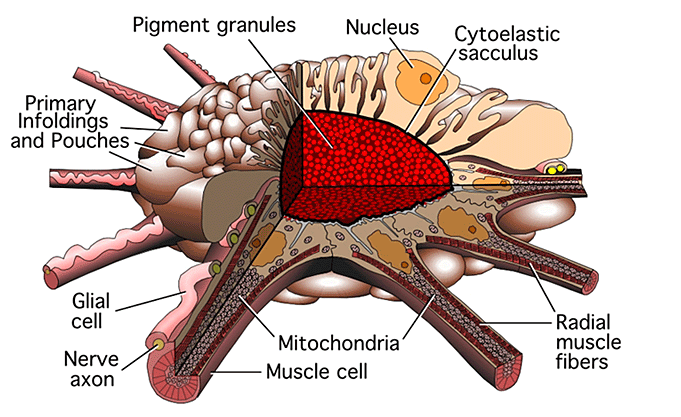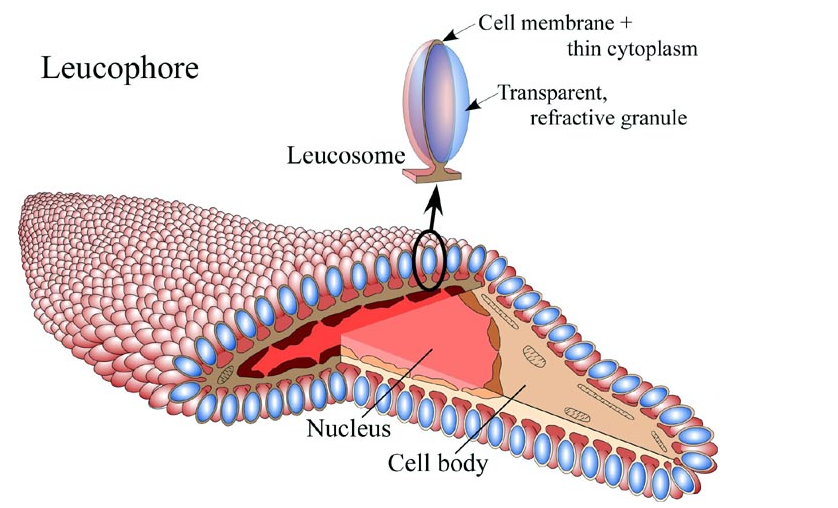Cuttlefish: The Chameleon of the Sea |
Biology 342 Fall 2011 |
Smith Freeman, Phoebe Young, and Abraham Leiser
Mechanism
Coloration
Coloration in cuttlefish is dependent on the different interactions of a layer of red, yellow, brown, and black-pigmented cromatophores superior to a sheet of reflective iridiphores and leucaphores. Chromatophore cells contain sacs of pigment with muscular walls that when active are squashed into a disc shape [3][2]. Chromatophores in cuttlefish participate in a specific structure with yellow-pigmented chromatophores (xanthophores) at the surface with red/orange (erythrophores), brown/black (melanophores) pigments following. The iridiphores are small plates of chitin or protein that reflect blue and green light while the leucaphores reflect white ambient light and are thought to play a role in matching the cuttlefish’s skin pattern to the background [3][6].
Because of the cuttlefish’s physical structure it is unable to see its own coloration change and thus unable to modulate on the basis of sensorimotor feedback. Many scientists have concluded that an area on the cuttlefish’s back, called the white square, is a strong predictor of background determination of body choice coloration. In other words the white square provides a random sample of light objects in the background [1].

Figure 1. Generic cephalopod chromataphore

Figure 2. Generic cephalopod leucaphore
Polarization
Light travels in a wave, but not simply one wave. Instead a compilation of light waves at all angles, vertical, horizontal, etc; however when light is polarized it is reduced to one plane. Humans cannot see polarized light because our eyes have not evolved to distinguish between different planes of light but rather a combination of all waves. On the other hand, the cuttlefish retina has evolved an orthogonal structure ubiquitous among many cephalopods. Photoreceptors in the retina called microvilli in each cell are lined up parallel to on another and orthogonal to microvilli of fellow receptor cells. Because of this orthogonal structure the cuttlefish is able to distinguish between different planes of light. Iridiphores containing reflecting platelets that are positioned parallel to each other allow cuttlefish (and other cephalopods) to reflect and adjust the intensity of polarized light [8].